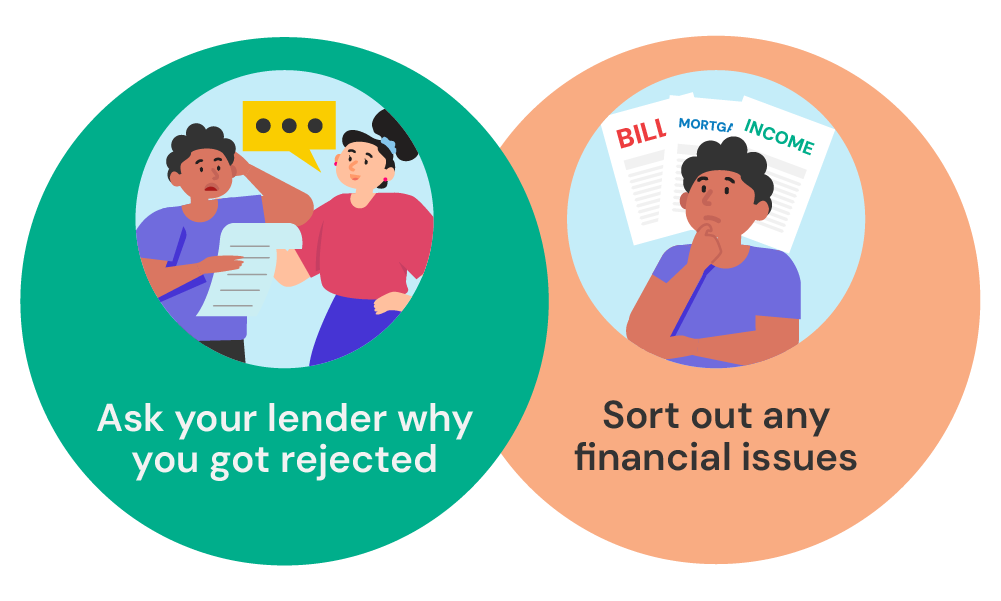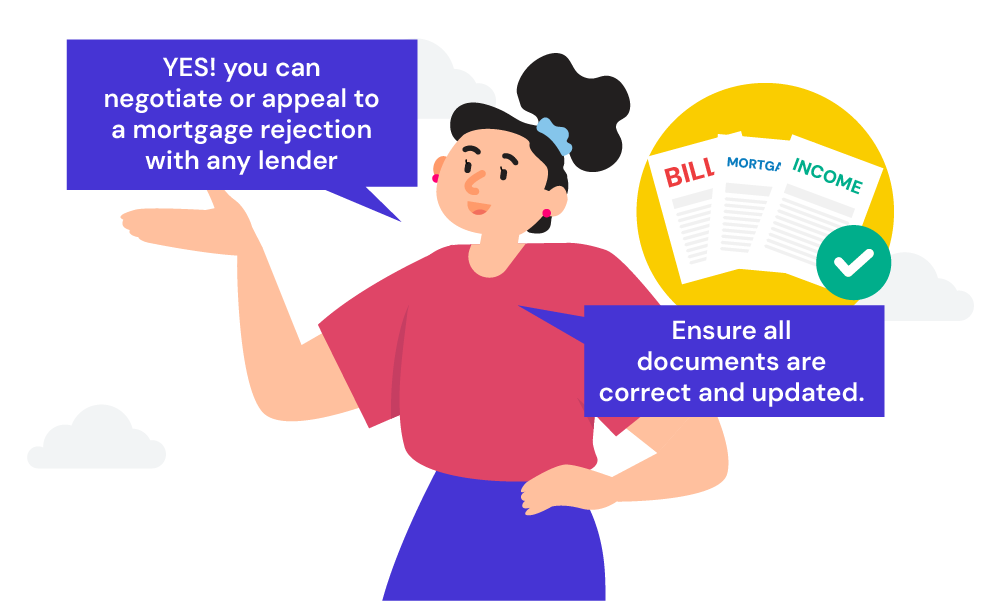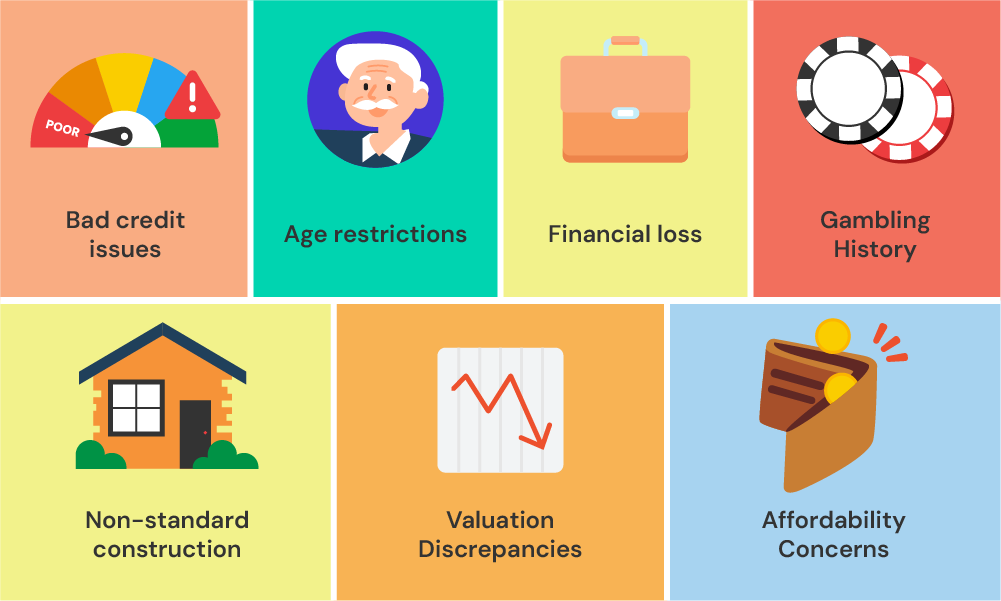- Are Santander Strict Lenders Compared to Others?
- How Long Does a Santander Mortgage Application Take?
- What Should You Do If Santander Declines Your Mortgage?
- Can You Appeal Santander’s Mortgage Decision?
- Common Reasons Santander Might Turn Down Your Mortgage Application
- When Should I Re-apply for a Mortgage?
- The Bottom Line
What Should I Do After Santander Refused My Mortgage?

Getting a rejection for your mortgage application can be quite a blow, especially in the UK where so many face similar challenges.
It’s a situation that often leaves you feeling uncertain, especially after you’ve put in a lot of effort and hope.
If you’re wondering what to do after Santander has declined your mortgage application, you’re in the right place.
This article is designed to help you understand why Santander might have said no. It’ll also guide you through steps to improve your chances for next time.
While this article is a great starting point, remember that getting advice tailored to your specific situation is the most effective way to tackle your mortgage issues.
Personalised guidance can save you time and lower your stress as you work towards a successful mortgage application.
Are Santander Strict Lenders Compared to Others?
Santander’s mortgage criteria are similar to other major lenders. This means they have clear rules about who they lend to and why.
Like others, they look at your credit history, income, and the property you want to buy. But don’t worry, they do consider each application carefully.
Santander also works with intermediaries, like mortgage brokers, who can help you understand these rules. They’re quite useful, especially if your case isn’t straightforward.
These intermediaries know the ins and outs of Santander’s criteria and can guide you on how to make your application stronger.
How Long Does a Santander Mortgage Application Take?
Generally, it takes about three weeks to process a mortgage application. But, this can vary.
If everything in your application is clear and straightforward, it might be quicker. However, if there are things like credit issues or if you’re self-employed, it might take a bit longer. This is because Santander, like any lender, needs to check everything’s in order.
The remortgaging process with Santander is similar. They’ll need to look at your current financial situation and the property.
So, patience is key here, as they work through all the details to make sure everything lines up right.
Both of these sections are written to provide clear and straightforward information about Santander’s lending practices and the time it takes to process a mortgage application, ensuring the content is accessible and engaging for a broad audience.
What Should You Do If Santander Declines Your Mortgage?
If Santander has turned down your mortgage application, it’s important to handle the situation carefully and avoid making quick decisions. Here’s what you should do next:
Don’t Rush into Another Application
It might be tempting to immediately try with another lender, but this can impact your credit score negatively. Multiple applications in a short span can raise red flags for lenders.
Find Out Why You’re Turned Down
Take a close look at why Santander declined your application. It could be related to your credit history, income, or specific issues with the property you’re interested in. Understanding these reasons is vital in addressing the underlying issues.
Consult a Mortgage Advisor
Before taking any further steps, consider speaking to a mortgage advisor. They can offer expert insights into your declination and advise on the best course of action.
This could involve improving certain aspects of your application or considering different lenders whose criteria might better align with your situation.
Make a Plan for What’s Next
With advice from your mortgage advisor and a clear understanding of why you were turned down, start planning how to improve your application.
This might mean working on your credit score, saving a bigger deposit, or dealing with any issues about the property.
Look at Other Lender Options
Different lenders have different lending rules. If Santander’s rules don’t fit with your situation, your mortgage advisor can help you find other lenders who might be more suitable.

Can You Appeal Santander’s Mortgage Decision?
Yes, appealing a mortgage decision with Santander is possible.
If you feel there has been a misunderstanding or if your circumstances have changed, you can ask them to take another look at your application.
Here’s how you can go about it:
- Understand the Appeal Process. Check Santander’s website or contact them to understand how you can submit an appeal. They usually have clear guidelines on this.
- Seek Advice. Before you appeal, it might be a good idea to talk to a Santander mortgage advisor. They can help you understand if appealing is the right move or if it’s better to try with a different lender. A mortgage advisor can also guide you in strengthening your application for the appeal.
In both these steps, it’s about being thoughtful and not rushing. Whether it’s taking time to understand why you were declined or considering an appeal, a measured approach is key.

Common Reasons Santander Might Turn Down Your Mortgage Application
Understanding why Santander might decline a mortgage application is crucial. Here are some of the most common reasons:
Your Recent Credit History Isn’t Spotless
If you’ve had any defaults on loans or credit agreements in the past year, Santander may view your application as high risk. They generally prefer a clear credit history for at least the last 12 months.
You’re Nearing or Over 70 Years Old
There are age limits for borrowers with Santander. If you are over 70 years old, it’s likely your application will be declined. The maximum age at the end of the mortgage term with Santander is 75 years.
Last Year Was Tough for Your Self-Employment
For self-employed individuals, Santander scrutinises financial stability.
If you’ve experienced a financial loss in the last year, this could lead to your application being declined, even after an initial agreement in principle.
Gambling History
A history of frequent or significant gambling transactions can be a red flag for Santander. They tend to be cautious about lending to individuals who have a regular gambling habit.
Your Dream Home’s Construction Is Unusual
Santander can be cautious about lending for properties with unconventional construction, such as buildings with single-skin construction or non-repaired prefabricated reinforced concrete. These types of properties often result in a decline after the initial mortgage principle is offered.
Valuation Discrepancies
Issues can arise if the property’s valuation does not match the expected value or purchase price. Santander might adjust their offer or decline the application based on the valuation report.
Affordability Concerns
Recent self-employment can be tricky with Santander, as they typically require a minimum of two years of stable trading history. Professional landlords relying mainly on rental income may also face challenges.
Other Factors
Various other reasons could influence Santander’s decision.
These include having an IVA, being paid in cash, applying with a guarantor, property location (Channel Islands or Isle of Man), stipend income, property purchased at an auction, remortgaging to raise equity, receiving a gifted deposit from a non-mortgage holder, or deposits sourced from cryptocurrency.
Each of these factors represents a specific area of concern for Santander. Being aware of these can help you better prepare your application or seek alternative lenders if necessary.

When Should I Re-apply for a Mortgage?
Deciding when to re-apply for a mortgage after Santander turns you down is important. It’s not just about picking a date; it’s about making sure you’re more prepared than you were before.
Usually, waiting at least six months is a good idea. This gives you time to address any issues that caused your initial application to be turned down.
Here’s how you can use that time effectively:
Improve Your Credit Score
If your credit history was a stumbling block, focus on enhancing it. Pay off existing debts and keep up with all your bill payments.
Avoid new loans for now and routinely check your credit report for errors. A better credit history can significantly increase your chances of being approved.
Demonstrate Job Stability
If you recently started a new job or were in a probationary period, staying in the same role for a while can show lenders that your income is stable. A steady job increases your appeal as a borrower.
The bigger your deposit, the less risk you pose to the lender. Aim to save as much as you can during this period. A larger deposit could also lead to better mortgage rates.
Cut Down on Extra Spending
Reduce your non-essential expenses. This not only helps in saving more but also improves your debt-to-income ratio, showing lenders that you’re financially responsible.
Address Property-Related Concerns
If issues with the property caused the rejection, find a property with fewer complications or resolve the existing issues. Lenders are more likely to approve properties without significant problems.
Organise Financial Documentation
Ensure all your financial documents, like bank statements and payslips, are well-organised and up to date. This makes your application process smoother and more straightforward.
Consult with a Mortgage Broker
A mortgage broker can provide personalised advice on the right time to reapply. They can assess your financial situation and may recommend lenders who are more likely to approve your application.
By taking these steps, you are not only preparing yourself for a stronger reapplication but also understanding the mortgage process better.
Remember, being declined once doesn’t mean the end of your mortgage aspirations; it’s an opportunity for you to strengthen your application and come back with a better chance of success.

The Bottom Line
Being turned down for a mortgage is not a full stop on your property dreams. The first step you must take is to avoid rushing in your application and find out the reason for your rejection.
Knowing why you’ve been refused is important for making changes. It’s always best to take your time to reassess your situation.
This will give you time to improve your financial standing, reevaluate your property choice, or save a larger deposit for better approval chances and terms.
But if you want to level up your game, one of the most helpful steps you can take is to consult with a mortgage advisor.
They can offer tailored advice, help you figure out why you were refused, and guide you in making your application stronger.
Feeling overwhelmed? Skip the stress, and get in touch with us. We’ll connect you with an FCA-qualified broker who specialises in situations like yours.
Get Matched With Your Dream Mortgage Advisor...

Frequently Asked Questions
Can I secure a mortgage with a gifted deposit?
Yes, you can. Santander accepts mortgage applications with deposits gifted from family members or friends. However, they don’t accept deposits from someone living in the property but not named on the mortgage.
>> More about Mortgage with Gifted Deposits.
Can I apply for a mortgage with a criminal record?
Santander generally doesn’t lend to individuals with a criminal record, unless it’s for a minor traffic offence or is spent under the Rehabilitation of Offenders Act 1974. Some lenders are more flexible in this regard.
>> More about Applying for a Mortgage with a Criminal Record
Will Santander accept my mortgage application even if I have a previous CCJ?
Yes, you can apply for a mortgage with Santander if you have a County Court Judgement (CCJ), as long as it wasn’t registered in the last three months and is satisfied.
Are self-build projects financed by Santander?
No, Santander doesn’t offer self-build mortgages. If you’re looking to build your own home, you’ll need to look at other lenders who specialise in these types of mortgages.
Does a successful property valuation guarantee mortgage approval?
Not necessarily. Passing the valuation is a positive step, but it doesn’t mean your mortgage is approved. You’ll need to wait for a formal mortgage offer from Santander to be sure.



